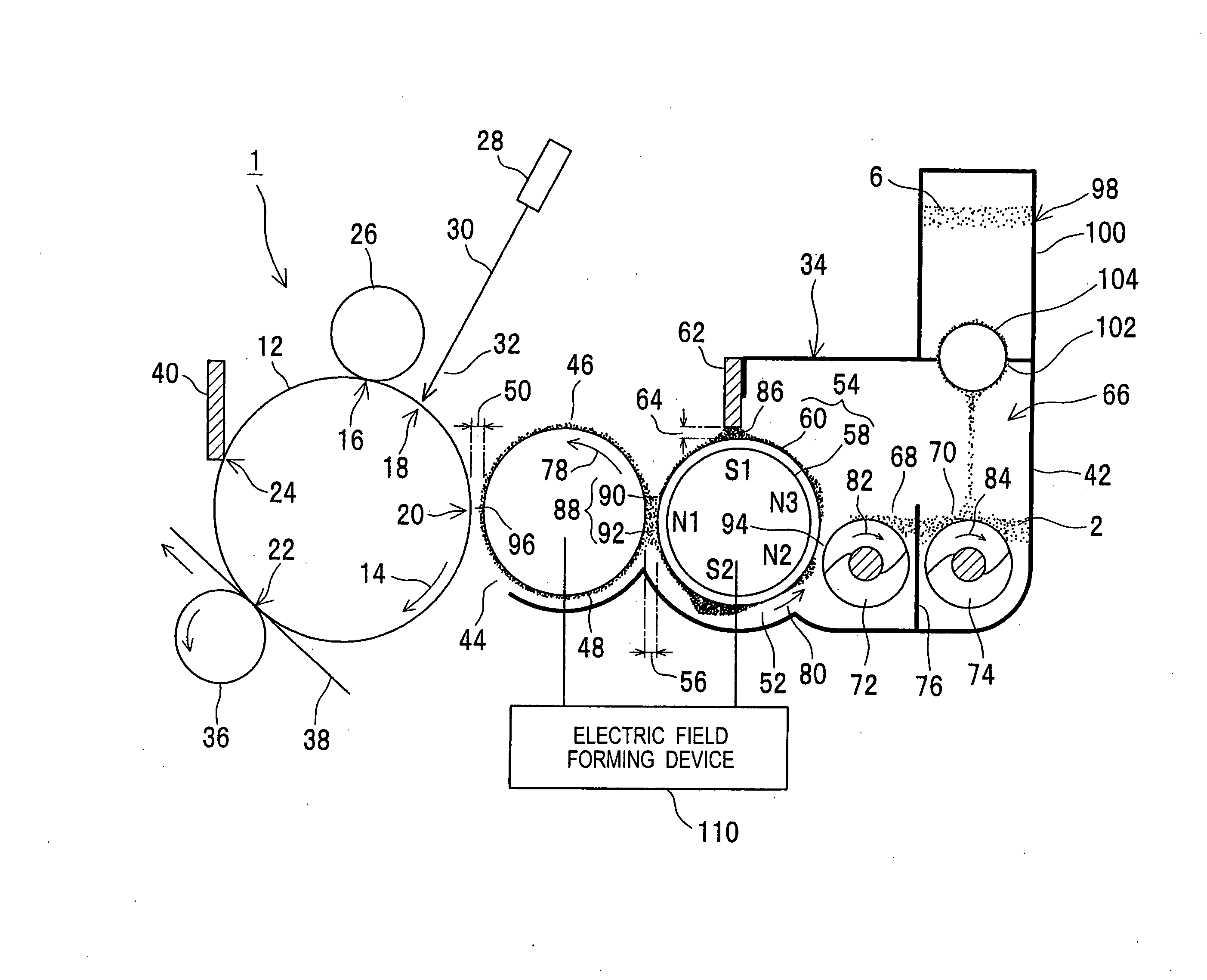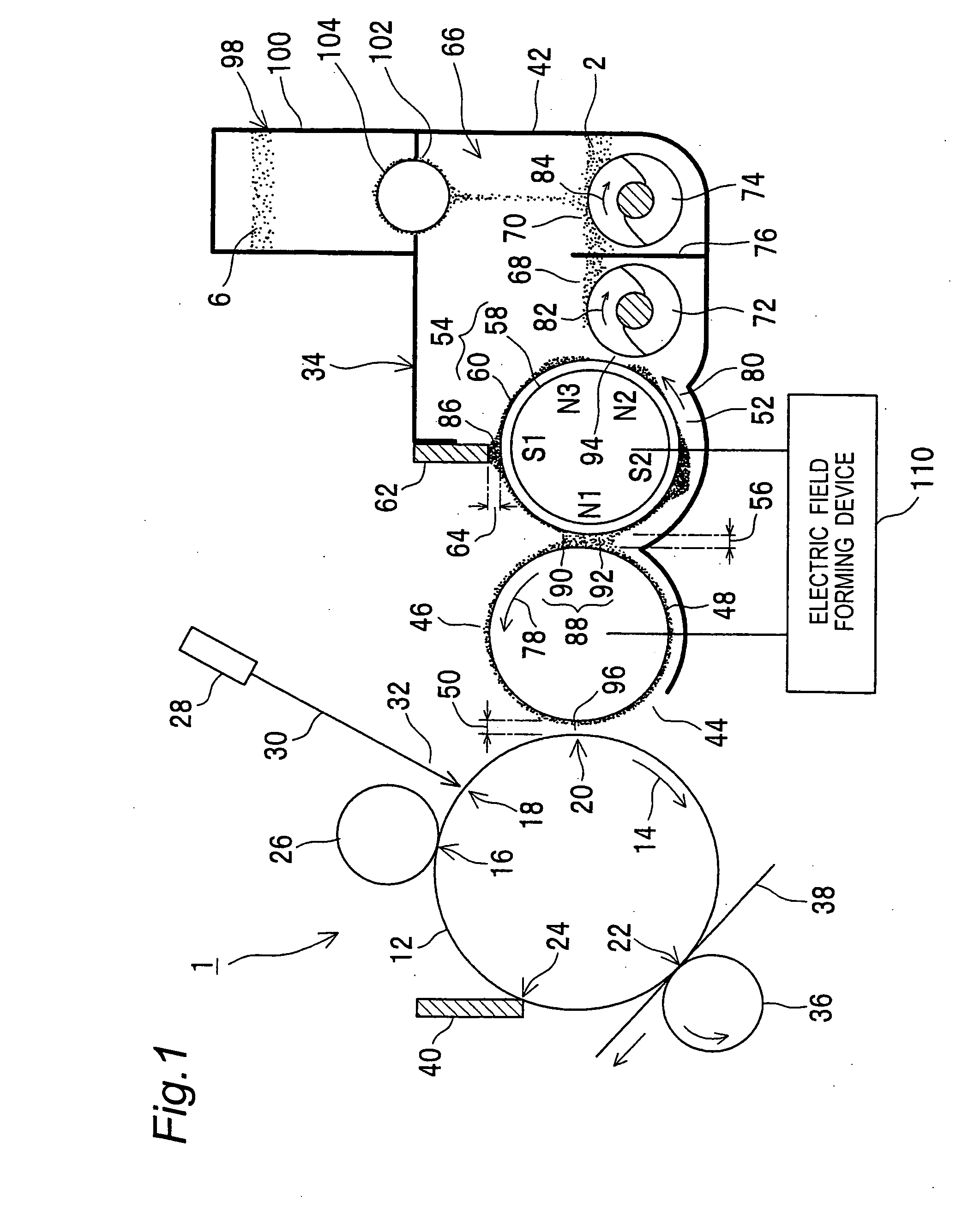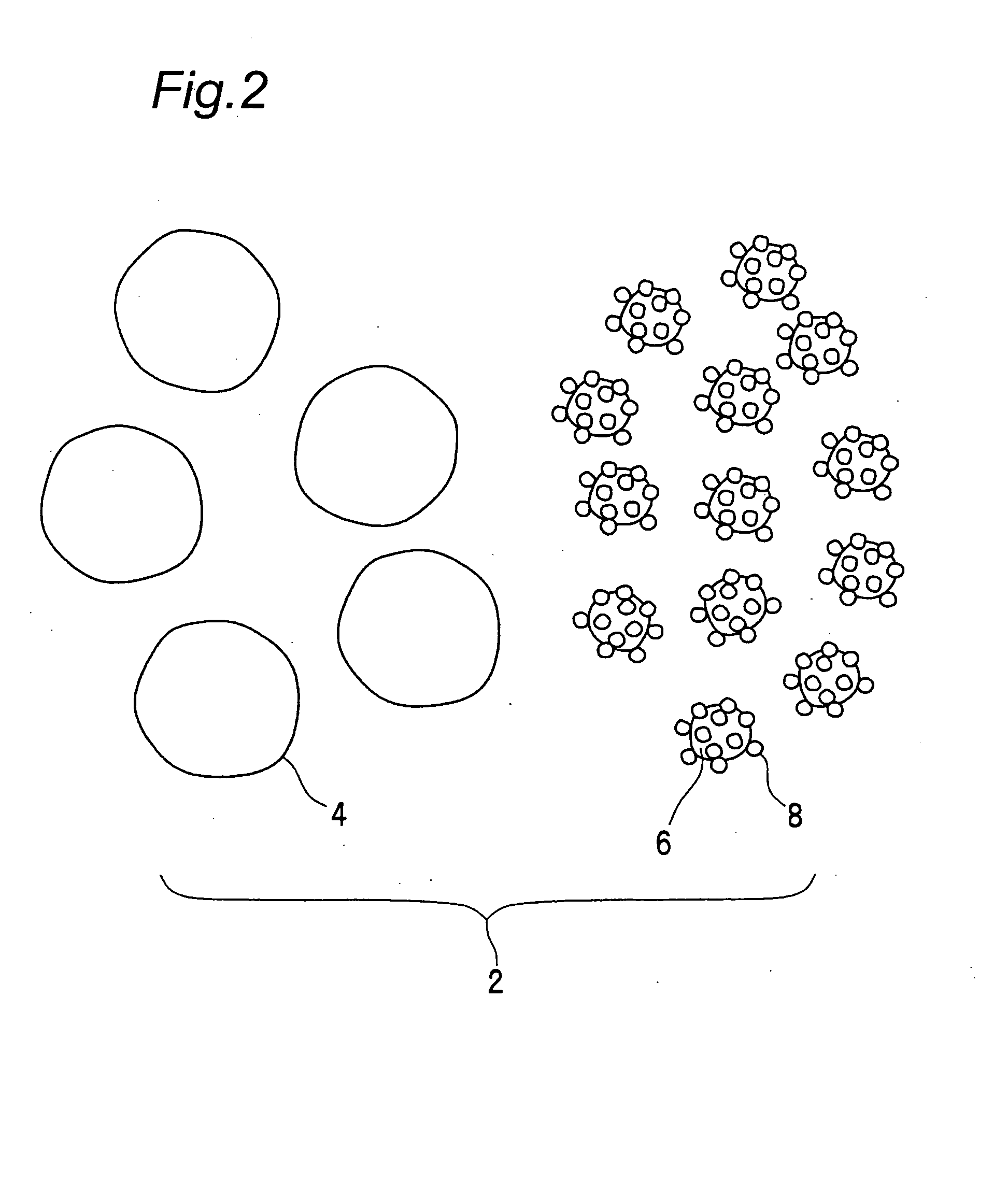Developing device and image forming apparatus
a developing device and image forming technology, applied in the field of electrographic image forming apparatus, can solve the problems of short life of the developing device, degraded toner charging performance, damage to the toner, etc., and achieve the effect of stable toner chargeability, efficient collection, and preventing hysteresis phenomena
- Summary
- Abstract
- Description
- Claims
- Application Information
AI Technical Summary
Benefits of technology
Problems solved by technology
Method used
Image
Examples
experimental example 1
[0116]The supply / recovery gap which is a closest section between the developing roller and the conveying roller was set to 0.3 mm. A developing bias with a DC voltage of −300 v was applied to the developing roller. The experiment was conducted with a so-called contact development structure in which the developing roller comes into contact with the photoconductor via a toner layer.
[0117]Under such conditions, rectangular-wave oscillating biases shown in FIGS. 10(f) and (g) were applied to the conveying roller to form oscillating electric fields as shown in FIGS. 11(f) and (g) in the supply / recovery region, in order to evaluate the recovery performance of development residual toner from the developing roller, and an auxiliary carrier charging function by the charged particle. The oscillating voltage was fixed to a frequency of 2 kHz, an amplitude of 1000 v, and an amplitude median value of −700 v while the duty ratio (expressed as “duty” in each table and drawing below) was varied fro...
experimental example 2
[0121]In an experimental example 2, a developing bias formed by superimposing a rectangular-wave oscillating bias having a frequency of 2 kHz and an amplitude of 1600 v on a DC voltage of −300 v was applied to the developing roller, and a so-called non-contact development structure, in which a development gap in the closest section between the photoconductor and the developing roller was set to 0.15 mm, was formed to conduct an experiment for evaluation similar to that conducted in the experimental example 1. The supply / recovery gap was set to 0.3 mm as in the experimental example 1. While an oscillating bias was used as a bias applied to the developing roller, the bias applied to the conveying roller was adjusted so that the electric field in the supply / recovery region between the developing roller and the conveying roller was identical to that in the experimental example 1. That is, waveform voltages shown in FIGS. 10(b) and (c) were applied to the conveying roller so as to activa...
experimental 3
[0123]An experiment was conducted to examine whether the same function as in the experimental example 2 can be acquired in the case where a device similar to that in the experimental example 2 is used and the frequency of oscillating biases applied to the developing roller and the conveying roller is 3 kHz and 4 kHz. As a result of the experiment, solid charge difference ratios are shown in the table and graph view in FIG. 15 together with the result of the experimental example 2. As is clear from FIG. 15, the recovery side duty ratio efficient for pumping of the toner on the developing roller regardless of the frequency is 60% to 80%.
PUM
 Login to View More
Login to View More Abstract
Description
Claims
Application Information
 Login to View More
Login to View More - R&D
- Intellectual Property
- Life Sciences
- Materials
- Tech Scout
- Unparalleled Data Quality
- Higher Quality Content
- 60% Fewer Hallucinations
Browse by: Latest US Patents, China's latest patents, Technical Efficacy Thesaurus, Application Domain, Technology Topic, Popular Technical Reports.
© 2025 PatSnap. All rights reserved.Legal|Privacy policy|Modern Slavery Act Transparency Statement|Sitemap|About US| Contact US: help@patsnap.com



